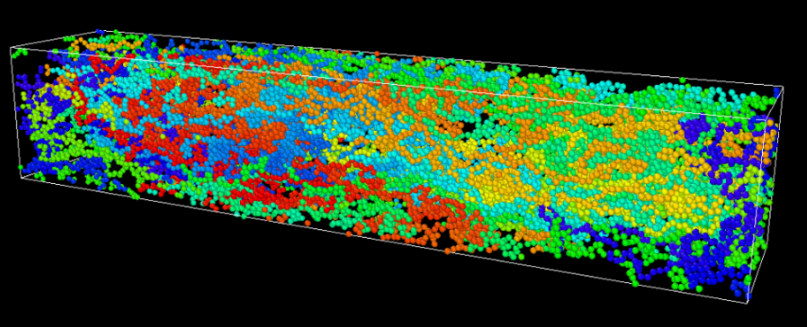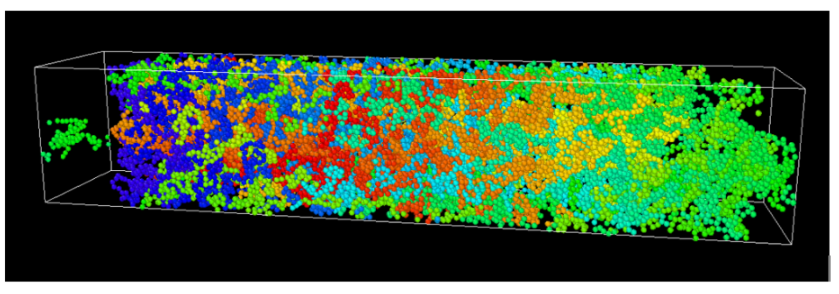Dear Dr. Axel Kohlmeyer and LAMMPS Users,
Hello Dr. Kolhmeyer. I am simulating uniaxial elongation of polymer network. Nonconnected atoms are governed by LJ potential whereas connecting atoms are governed by the unbreakable FENE bonds.
My LAMMPS input script reads the data file that consists of atom coordinates and bond data.
Using this exact same data file, I have tried two cases of different strain rate.
Case 1, the strain rate is 0.05 in LJ units and at 200% strain, I am properly detecting stress in the loading direction due to the elasticity of the FENE bonds. In OVITO, the snapshot at this 200% is shown below

Case 2, the strain rate is 0.0001 (a few orders of magnitude slower) in LJ units and at 200% strain, I am detecting virtually no stress and the corresponding OVITO snapshot is shown below:

Theoretically, both cases should yield the same result since the relaxation time of FENE bond is much faster than the loading rate. (0.05 is very fast but, more importantly, the case with the slower strain rate is not detecting any stress)
However, Case 2 (slow strain rate) does not detect any stress in the loading direction and, from the OVITO snapshot, hardly any polymer chains are crossing the periodic boundaries in the loading direction. That is, I see a vacant region (circled in yellow) near the periodic boundaries in the loading direction where, in principle, the atoms that cross these periodic boundaries are expected to remap into the elongating box in order to stretch the FENE bonds.
It seems to be that the entire polymer network is aggregated towards the center of the elongating box, where hardly any chains are crossing the periodic boundaries for applying stress.
Why is this happening?
Both cases uses the same data file thereby simulating the same polymer network.
I do not think it has to do with my initial geometry since the polymer network in the data file is well equilibrated and, moreover, Case 1 (fast strain rate) is properly measuring stress.
I would greatly appreciate for any advice. Thank you for your time and I also attached my input script.
Sincerely,
Masato Koizumi
input.in (709 Bytes)
 .
.